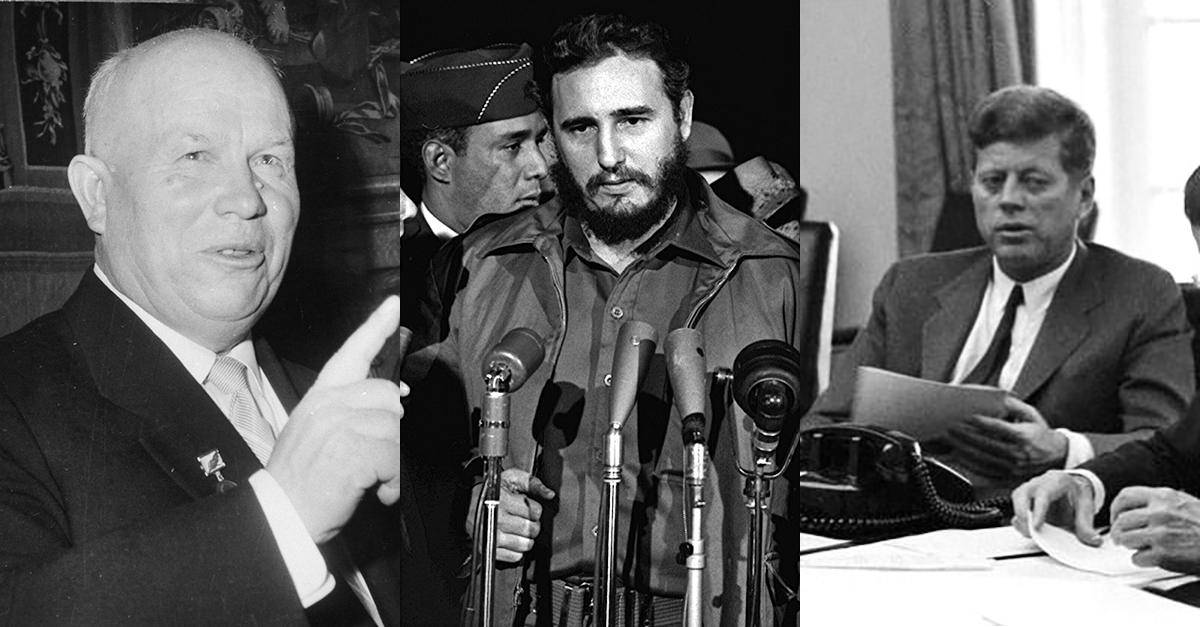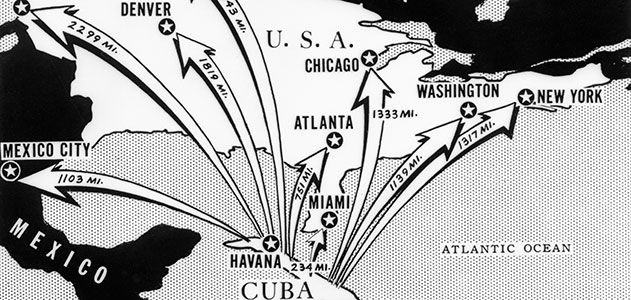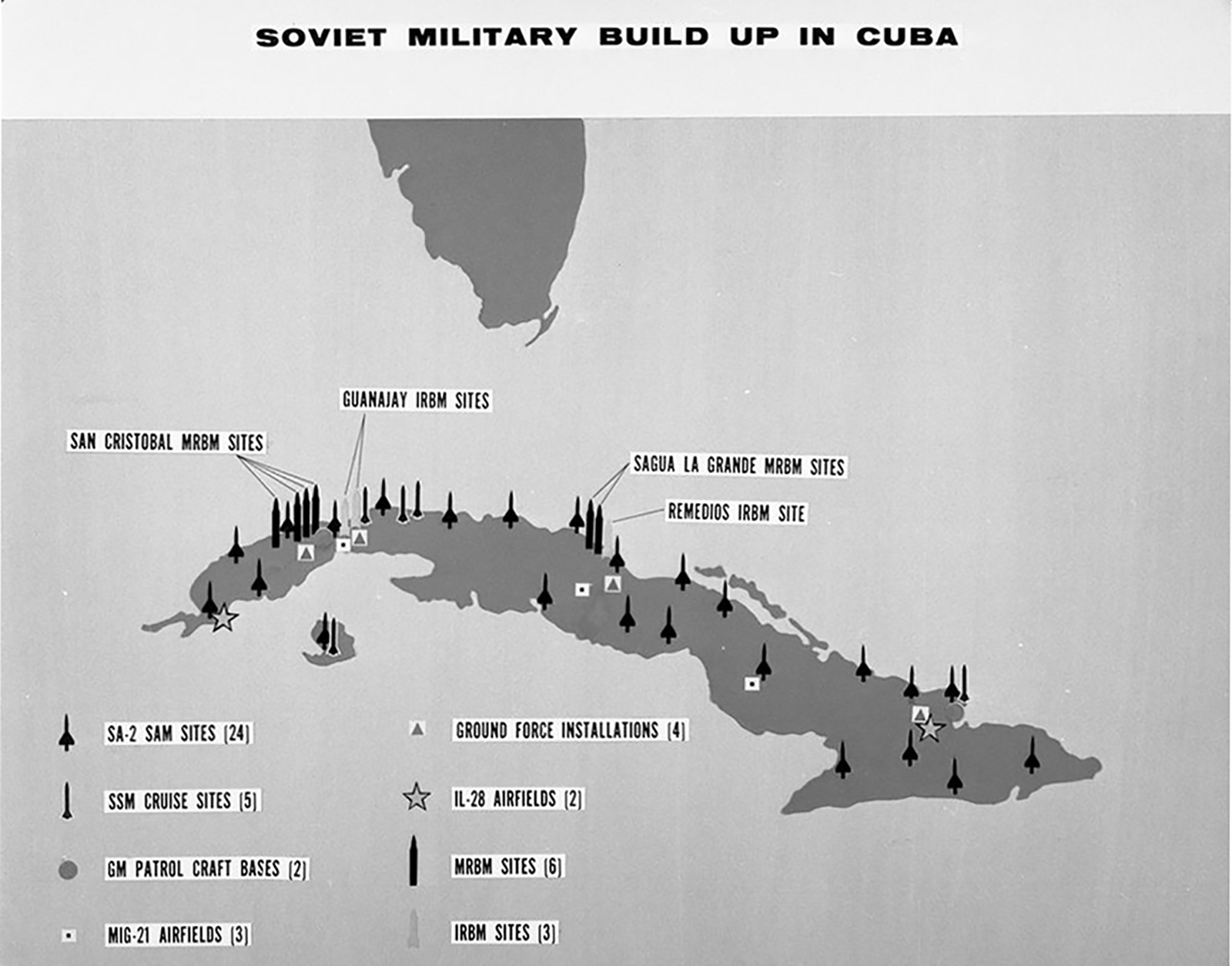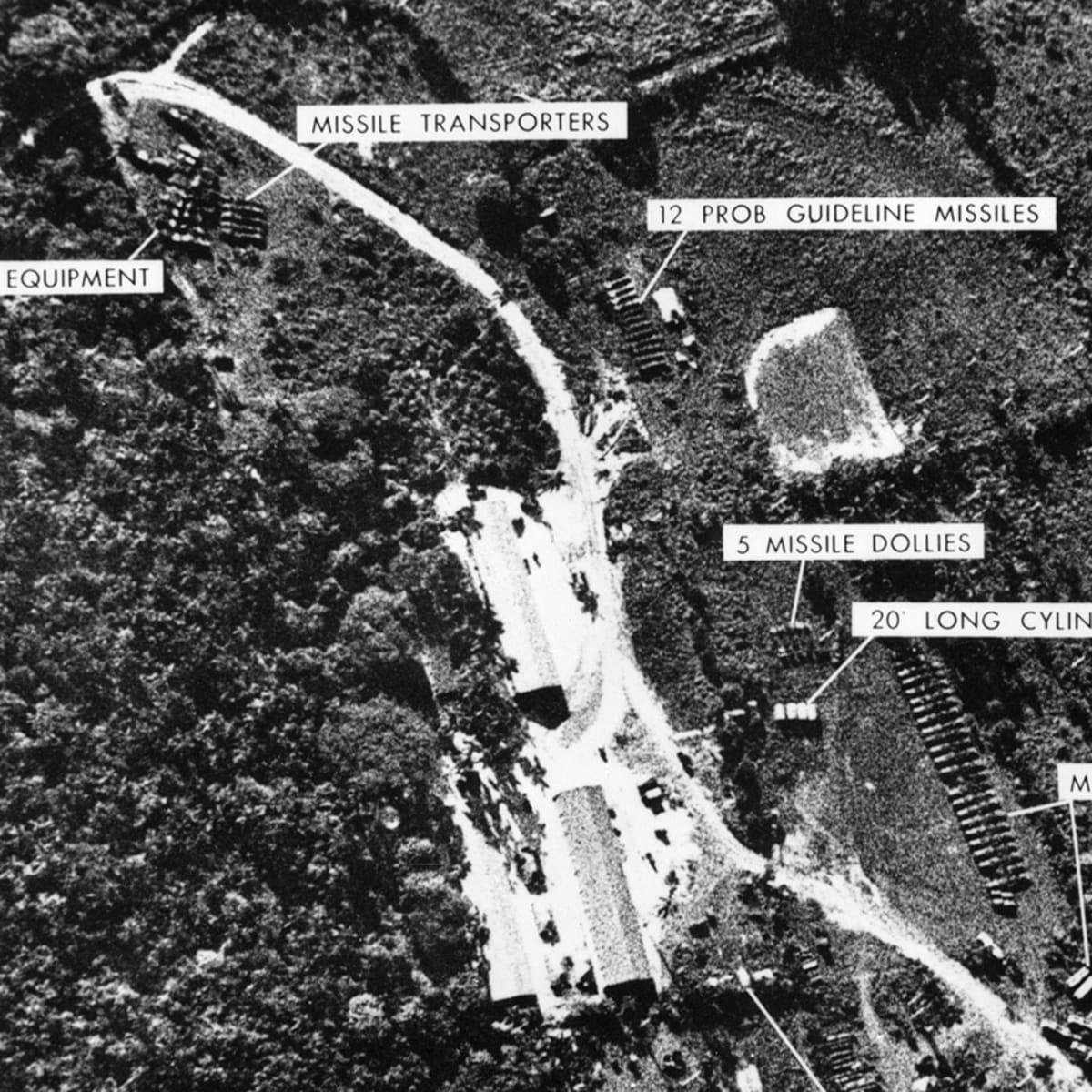Premise
The Cuban Missile Crisis
Summary of the Cuban Missile Crisis
The Cuban Missile Crisis began with Fidel Castro gaining control over Cuba in a communist revolution. Through the aspect of a neighboring ‘red danger,’ combined with expropriating US businesses in Cuba, and rallying Cuban people against the US, Castro cemented Cuba as firmly anti-American. The failed Bay of Pig’s Invasion, orchestrated chiefly by the CIA, in which the US sent Cuban refugees to Cuba to infiltrate and usurp the communist government, was used by Castro as evidence of American malfeasance. As Tom Patterson, a Harvard historian, states, “It may be plausibly argued that, had there been no exile expedition, no destructive activities, and no economic and diplomatic boycott – had there been no concerted United States vendetta to quash the Cuban revolution – there would not have been an October Missile crisis.”
Nonetheless, the USSR, realizing that Cuba now shared a common enemy, offered Castro soldiers, support, and nuclear installations. This move would make the USSR an immediate threat to the United States. So, when Ernesto Guevara, a Cuban revolutionary, was sent to Moscow to sign a military pact, Soviet missiles were to be placed in Cuba.
On October 15, 1962, an American reconnaissance operation photographed a missile site in Cuba, which was shown to President Kennedy. Not knowing if the missiles were yet functional, he did not want to risk nuclear war – the hope of the gamble that Khrushchev took when allying with Cuba. President Kennedy instead retaliated by blockading and embargoing Cuba, which he still feared was a declaration of war. Consequently, when an American spy plane was shot down over Cuba, both powers blamed each other for subversive tactics. This escalation put the world on the brink of nuclear war. Quickly, both sides made a deal on October 28, 1962, which stated that missiles would be removed from Cuba if the US agreed not to invade Cuba. Along with this stipulation, a secret deal took place – to ensure that President Kennedy looked to be taking a ‘hard-line’ approach to Cuba – where he agreed to the relocation of US missiles from Turkey and Italy.
“We will not prematurely or unnecessarily risk the costs of worldwide nuclear war in which even the fruits of victory would be ashes in our mouth, but neither will we shrink from that risk at any time it must be faced.”
-John F. Kennedy
How did Miscommunication play a Role in the Cuban Missile Crisis?
Miscommunication was the primary cause of the Cuban Missile Crisis. To elaborate, the subversive placement of nuclear missiles in Turkey by NATO and the subsequently, under-the-radar transporting of nuclear missiles to Cuba by the USSR can both be pegged down to a lack of transparency, openness, and communication. In both cases, the attempt at one-upping or pulling the wool over the other side’s eyes failed miserably – with the Cuban Missile Crisis escalating to the precipice of nuclear annihilation.
However, NATO and the USSR attempted to ameliorate this miscommunication. They began a dialogue where they reached an agreement. This accord stated that the USSR was to remove their devices from Cuba and NATO was to relocate their ICBNMs from Turkey, coupled with an assurance from the USA never to invade Cuba again. With this resolution instigated by communication, both sides wanted to ensure that the avoidable abhorrence of miscommunication could be dealt with expeditiously, so they installed the ‘Red Line’ – a telephone connection directly from Washington D.C. to Moscow.
In this scenario, one can see how miscommunication and its effects were hugely impactful upon the Cuban Missile Crisis, and how, after engaging in proactive discussion, both sides were able to come to a resolution.
Picture 1) A tri-photo of Nikita Khrushchev, Fidel Castro, and John Kennedy - American University. Picture 2) Potential missile-range from Cuba - Smithsonian Magazine. Picture 3) Map of military build-up in Cuba - Britannica. Picture 4) U2 Spy Plane photograph of Cuban missile silo - History.com.



